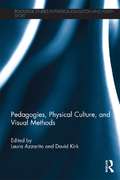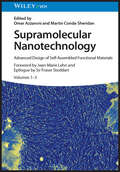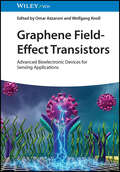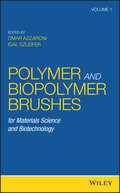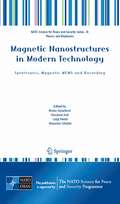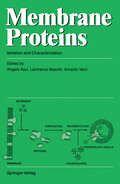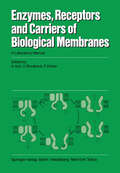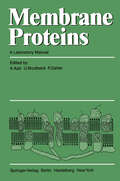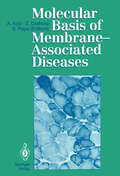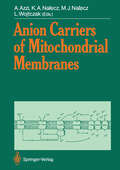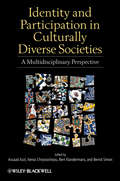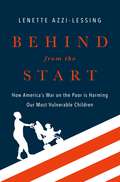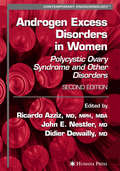- Table View
- List View
Social Justice in Globalized Fitness and Health: Bodies Out of Sight (Routledge Research in Sport, Culture and Society)
by Laura AzzaritoIn today’s neoliberal times, thinking about fitness and health is dominated by the media’s narratives of "fit bodies," which are presented and circulated in society as "valued bodies." Outside that mainstream view, however, there are many people labeled "bodies-at-risk": those who deviate from perceived norms of size, shape, race, social class, and gender. Social Justice in Globalized Fitness and Health draws attention to how neoliberal ideologies impacting the body overlook the intersection of class, gender/sex, and race that informs how young, ethnic minoritized people embody and negotiate normative discourses of fitness and health. Indeed, through the lens of critical race theory (CRT), post-feminism, and postcolonialism, Azzarito highlights young, ethnic minoritized people’s struggles to find a culturally relevant sense of self. Arguing for the need to found educational spaces where young, ethnic minoritized people can recognize themselves, resist and counter-narrate negative stereotypes, and self-represent to the public in affirmative ways, Social Justice in Globalized Fitness and Health will appeal to students and researchers interested in fields such as physical culture, education, sport sociology, qualitative methods, and cultural and visual studies, as well as scholars and practitioners of physical education and health in schools.
Social Justice in Globalized Fitness and Health: Bodies Out of Sight (Routledge Research in Sport, Culture and Society)
by Laura AzzaritoIn today’s neoliberal times, thinking about fitness and health is dominated by the media’s narratives of "fit bodies," which are presented and circulated in society as "valued bodies." Outside that mainstream view, however, there are many people labeled "bodies-at-risk": those who deviate from perceived norms of size, shape, race, social class, and gender. Social Justice in Globalized Fitness and Health draws attention to how neoliberal ideologies impacting the body overlook the intersection of class, gender/sex, and race that informs how young, ethnic minoritized people embody and negotiate normative discourses of fitness and health. Indeed, through the lens of critical race theory (CRT), post-feminism, and postcolonialism, Azzarito highlights young, ethnic minoritized people’s struggles to find a culturally relevant sense of self. Arguing for the need to found educational spaces where young, ethnic minoritized people can recognize themselves, resist and counter-narrate negative stereotypes, and self-represent to the public in affirmative ways, Social Justice in Globalized Fitness and Health will appeal to students and researchers interested in fields such as physical culture, education, sport sociology, qualitative methods, and cultural and visual studies, as well as scholars and practitioners of physical education and health in schools.
Pedagogies, Physical Culture, and Visual Methods (Routledge Studies in Physical Education and Youth Sport)
by Laura Azzarito David KirkTo understand and more creatively capture the social world, visual methods have increasingly become used by researchers in the social sciences and education. However, despite the rapid development of visual-based knowledge, and despite the obvious links between human movement and visual forms of understanding, visual research has been scarce in the fields of physical culture and physical education pedagogy. This groundbreaking book is the first to mark a "visual turn" in understanding and researching physical culture and pedagogies, offering innovative, image-based research that reveals key issues in the domains of sport, health, and physical education studies. Integrating visual research into physical culture and pedagogy studies, the book provides the reader with different ways of "seeing", looking at, and critically engaging with physical culture. Since human movement is increasingly created, established, and pedagogized beyond traditional educational sites such as schools, sport clubs, and fitness gyms, the book also explores the notion of visual pedagogy in wider physical culture, helping the reader to understand how visual-based technologies such as television, the internet, and mobile phones are central to people’s engagement with physical culture today. The book demonstrates how the visual creates dynamic pedagogical tools for revealing playful forms of embodiment, and offers the reader a range of visual methods, from researcher-produced photo analysis to participatory-centred visual approaches, that will enhance their own study of physical culture. Pedagogies, Physical Culture and Visual Methods is important reading for all advanced students and researchers with an interest in human movement, physical education, physical culture, sport studies, and research methods in education.
Pedagogies, Physical Culture, and Visual Methods (Routledge Studies in Physical Education and Youth Sport)
by Laura Azzarito David KirkTo understand and more creatively capture the social world, visual methods have increasingly become used by researchers in the social sciences and education. However, despite the rapid development of visual-based knowledge, and despite the obvious links between human movement and visual forms of understanding, visual research has been scarce in the fields of physical culture and physical education pedagogy. This groundbreaking book is the first to mark a "visual turn" in understanding and researching physical culture and pedagogies, offering innovative, image-based research that reveals key issues in the domains of sport, health, and physical education studies. Integrating visual research into physical culture and pedagogy studies, the book provides the reader with different ways of "seeing", looking at, and critically engaging with physical culture. Since human movement is increasingly created, established, and pedagogized beyond traditional educational sites such as schools, sport clubs, and fitness gyms, the book also explores the notion of visual pedagogy in wider physical culture, helping the reader to understand how visual-based technologies such as television, the internet, and mobile phones are central to people’s engagement with physical culture today. The book demonstrates how the visual creates dynamic pedagogical tools for revealing playful forms of embodiment, and offers the reader a range of visual methods, from researcher-produced photo analysis to participatory-centred visual approaches, that will enhance their own study of physical culture. Pedagogies, Physical Culture and Visual Methods is important reading for all advanced students and researchers with an interest in human movement, physical education, physical culture, sport studies, and research methods in education.
Supramolecular Nanotechnology: Advanced Design of Self-Assembled Functional Materials, 3 Volumes
by Omar Azzaroni Martin Conda-SheridanSupramolecular Nanotechnology Provides up-to-date coverage of both current knowledge and new developments in the dynamic and interdisciplinary field of supramolecular nanotechnology In recent years, supramolecular nanotechnology has revolutionized research in chemistry, physics, and materials science. These easily manipulated molecular units enable the synthesis of novel nanomaterials for use in a wide range of current and potential applications including electronics, sensors, drug delivery, and imaging. Supramolecular Nanotechnology presents a state-of-the-art overview of functional self-assembling nanomaterials based on organic and polymeric molecules. Featuring contributions by an international panel of experts in the field, this comprehensive volume covers the design of self-assembled materials, their synthesis and diverse fabrication methods, the characterization of supramolecular architectures, and current and emerging applications in chemistry, biology, and medicine. Detailed chapters discuss the synthesis of peptide-based supramolecular structures and polymeric self-assembling materials, their characterization, advanced microscopy techniques, nanostructures made of porphyrins, polyelectrolytes, silica, their application in catalysis and cancer, atomistic and coarse-grained simulations, and more. Presents cutting-edge research on rationally designed, self-assembled supramolecular structures Discusses the impact of supramolecular nanotechnology on current and future research and technology Highlights applications of self-assembled supramolecular systems in catalysis, biomedical imaging, cancer therapies, and regenerative medicine Provides synthetic strategies for preparing the molecular assemblies and various characterization techniques for assessing the supramolecular morphology Describes theoretical modeling and simulation techniques for analyzing supramolecular nanostructures Supramolecular Nanotechnology: Advanced Design of Self-Assembled Functional Materials is essential reading for materials scientists and engineers, polymer and organic chemists, pharmaceutical scientists, molecular physicists and biologists, and chemical engineers.
Supramolecular Nanotechnology: Advanced Design of Self-Assembled Functional Materials, 3 Volumes
by Omar Azzaroni Martin Conda‐SheridanSupramolecular Nanotechnology Provides up-to-date coverage of both current knowledge and new developments in the dynamic and interdisciplinary field of supramolecular nanotechnology In recent years, supramolecular nanotechnology has revolutionized research in chemistry, physics, and materials science. These easily manipulated molecular units enable the synthesis of novel nanomaterials for use in a wide range of current and potential applications including electronics, sensors, drug delivery, and imaging. Supramolecular Nanotechnology presents a state-of-the-art overview of functional self-assembling nanomaterials based on organic and polymeric molecules. Featuring contributions by an international panel of experts in the field, this comprehensive volume covers the design of self-assembled materials, their synthesis and diverse fabrication methods, the characterization of supramolecular architectures, and current and emerging applications in chemistry, biology, and medicine. Detailed chapters discuss the synthesis of peptide-based supramolecular structures and polymeric self-assembling materials, their characterization, advanced microscopy techniques, nanostructures made of porphyrins, polyelectrolytes, silica, their application in catalysis and cancer, atomistic and coarse-grained simulations, and more. Presents cutting-edge research on rationally designed, self-assembled supramolecular structures Discusses the impact of supramolecular nanotechnology on current and future research and technology Highlights applications of self-assembled supramolecular systems in catalysis, biomedical imaging, cancer therapies, and regenerative medicine Provides synthetic strategies for preparing the molecular assemblies and various characterization techniques for assessing the supramolecular morphology Describes theoretical modeling and simulation techniques for analyzing supramolecular nanostructures Supramolecular Nanotechnology: Advanced Design of Self-Assembled Functional Materials is essential reading for materials scientists and engineers, polymer and organic chemists, pharmaceutical scientists, molecular physicists and biologists, and chemical engineers.
Graphene Field-Effect Transistors: Advanced Bioelectronic Devices for Sensing Applications
by Omar Azzaroni Wolfgang KnollGraphene Field-Effect Transistors In-depth resource on making and using graphene field effect transistors for point-of-care diagnostic devices Graphene Field-Effect Transistors focuses on the design, fabrication, characterization, and applications of graphene field effect transistors, summarizing the state-of-the-art in the field and putting forward new ideas regarding future research directions and potential applications. After a review of the unique electronic properties of graphene and the production of graphene and graphene oxide, the main part of the book is devoted to the fabrication of graphene field effect transistors and their sensing applications. Graphene Field-Effect Transistors includes information on: Electronic properties of graphene, production of graphene oxide and reduced graphene oxide, and graphene functionalization Fundamentals and fabrication of graphene field effect transistors, and nanomaterial/graphene nanostructure-based field-effect transistors Graphene field-effect transistors integrated with microfluidic platforms and flexible graphene field-effect transistors Graphene field-effect transistors for diagnostics applications, and DNA biosensors and immunosensors based on graphene field-effect transistors Graphene field-effect transistors for targeting cancer molecules, brain activity recording, bacterial detection, and detection of smell and taste Providing both fundamentals of the technology and an in-depth overview of using graphene field effect transistors for fabricating bioelectronic devices that can be applied for point-of-care diagnostics, Graphene Field-Effect Transistors is an essential reference for materials scientists, engineering scientists, laboratory medics, and biotechnologists.
Graphene Field-Effect Transistors: Advanced Bioelectronic Devices for Sensing Applications
by Omar Azzaroni Wolfgang KnollGraphene Field-Effect Transistors In-depth resource on making and using graphene field effect transistors for point-of-care diagnostic devices Graphene Field-Effect Transistors focuses on the design, fabrication, characterization, and applications of graphene field effect transistors, summarizing the state-of-the-art in the field and putting forward new ideas regarding future research directions and potential applications. After a review of the unique electronic properties of graphene and the production of graphene and graphene oxide, the main part of the book is devoted to the fabrication of graphene field effect transistors and their sensing applications. Graphene Field-Effect Transistors includes information on: Electronic properties of graphene, production of graphene oxide and reduced graphene oxide, and graphene functionalization Fundamentals and fabrication of graphene field effect transistors, and nanomaterial/graphene nanostructure-based field-effect transistors Graphene field-effect transistors integrated with microfluidic platforms and flexible graphene field-effect transistors Graphene field-effect transistors for diagnostics applications, and DNA biosensors and immunosensors based on graphene field-effect transistors Graphene field-effect transistors for targeting cancer molecules, brain activity recording, bacterial detection, and detection of smell and taste Providing both fundamentals of the technology and an in-depth overview of using graphene field effect transistors for fabricating bioelectronic devices that can be applied for point-of-care diagnostics, Graphene Field-Effect Transistors is an essential reference for materials scientists, engineering scientists, laboratory medics, and biotechnologists.
Polymer and Biopolymer Brushes: for Materials Science and Biotechnology
by Omar Azzaroni Igal SzleiferServes as a guide for seasoned researchers and students alike, who wish to learn about the cross-fertilization between biology and materials that is driving this emerging area of science This book covers the most relevant topics in basic research and those having potential technological applications for the field of biopolymer brushes. This area has experienced remarkable increase in development of practical applications in nanotechnology and biotechnology over the past decade. In view of the rapidly growing activity and interest in the field, this book covers the introductory features of polymer brushes and presents a unifying and stimulating overview of the theoretical aspects and emerging applications. It immerses readers in the historical perspective and the frontiers of research where our knowledge is increasing steadily—providing them with a feeling of the enormous potential, the multiple applications, and the many up-and-coming trends behind the development of macromolecular interfaces based on the use of polymer brushes. Polymer and Biopolymer Brushes: Fundamentals and Applications in Materials offers chapters on: Functionalization of Surfaces Using Polymer Brushes; Polymer Brushes by ATRP and Surface-Mediated RAFT Polymerization for Biological Functions; Electro-Induced Copper Catalyzed Surface Modification with Monolayer and Polymer Brush; Polymer Brushes on Flat and Curved Substrates; Biomimetic Anchors for Antifouling Polymer Brush Coating; Glycopolymer Brushes Presenting Sugars in Their Natural Form; Smart Surfaces Modified with Phenylboronic Acid-Containing Polymer Brushes; DNA Brushes; Polymer Brushes as Interfacial Materials for Soft Metal Conductors and Electronics; and more. Presents a comprehensive theory/simulation section that will be valuable for all readers Includes chapters not only on the biological applications of polymer brushes but also on biological systems that resemble polymer brushes on flat surfaces Addresses applications in coatings, friction, sensors, microelectromechanical systems, and biomaterials Devotes particular attention to the functional aspects of hybrid nanomaterials employing polymer brushes as functional units Polymer and Biopolymer Brushes: Fundamentals and Applications in Materials is aimed at both graduate students and researchers new to this subject as well as scientists already engaged in the study and development of polymer brushes.
Polymer and Biopolymer Brushes: for Materials Science and Biotechnology
by Omar Azzaroni Igal SzleiferServes as a guide for seasoned researchers and students alike, who wish to learn about the cross-fertilization between biology and materials that is driving this emerging area of science This book covers the most relevant topics in basic research and those having potential technological applications for the field of biopolymer brushes. This area has experienced remarkable increase in development of practical applications in nanotechnology and biotechnology over the past decade. In view of the rapidly growing activity and interest in the field, this book covers the introductory features of polymer brushes and presents a unifying and stimulating overview of the theoretical aspects and emerging applications. It immerses readers in the historical perspective and the frontiers of research where our knowledge is increasing steadily—providing them with a feeling of the enormous potential, the multiple applications, and the many up-and-coming trends behind the development of macromolecular interfaces based on the use of polymer brushes. Polymer and Biopolymer Brushes: Fundamentals and Applications in Materials offers chapters on: Functionalization of Surfaces Using Polymer Brushes; Polymer Brushes by ATRP and Surface-Mediated RAFT Polymerization for Biological Functions; Electro-Induced Copper Catalyzed Surface Modification with Monolayer and Polymer Brush; Polymer Brushes on Flat and Curved Substrates; Biomimetic Anchors for Antifouling Polymer Brush Coating; Glycopolymer Brushes Presenting Sugars in Their Natural Form; Smart Surfaces Modified with Phenylboronic Acid-Containing Polymer Brushes; DNA Brushes; Polymer Brushes as Interfacial Materials for Soft Metal Conductors and Electronics; and more. Presents a comprehensive theory/simulation section that will be valuable for all readers Includes chapters not only on the biological applications of polymer brushes but also on biological systems that resemble polymer brushes on flat surfaces Addresses applications in coatings, friction, sensors, microelectromechanical systems, and biomaterials Devotes particular attention to the functional aspects of hybrid nanomaterials employing polymer brushes as functional units Polymer and Biopolymer Brushes: Fundamentals and Applications in Materials is aimed at both graduate students and researchers new to this subject as well as scientists already engaged in the study and development of polymer brushes.
An Alternative Labour History: Worker Control and Workplace Democracy
by Dario AzzelliniThe global financial crisis has led to a new shop-floor militancy. Radical forms of protest and new workers' takeovers have sprung up all over the globe. In the US, Republic Windows and Doors started production under worker control in January 2013. Later that year workers in Greece took over and managed a hotel, a hospital, a newspaper, a TV channel and a factory.The dominant revolutionary left has viewed workers' control as part of a system necessary during a transition to socialism. Yet most socialist and communist parties have neglected to promote workers' control as it challenges the centrality of parties and it is in this spirit that trade unions, operating through the institutional frameworks of government, have held a monopoly over labor history.Tracing Marx's writings on the Paris Commune through council communism, anarcho-syndicalism, Italian operaismo, and other "heretical" left currents, An Alternative Labour History uncovers the practices and intentions of historical and contemporary autonomous workers' movements that until now have been largely obscured. It shows that by bringing permanence and predictability to their workplaces, workers can stabilize their communities through expressions of participatory democracy. And, as history has repeatedly shown, workers have always had the capacity to run their enterprises on their own.
An Alternative Labour History: Worker Control and Workplace Democracy
by Dario AzzelliniThe global financial crisis has led to a new shop-floor militancy. Radical forms of protest and new workers' takeovers have sprung up all over the globe. In the US, Republic Windows and Doors started production under worker control in January 2013. Later that year workers in Greece took over and managed a hotel, a hospital, a newspaper, a TV channel and a factory.The dominant revolutionary left has viewed workers' control as part of a system necessary during a transition to socialism. Yet most socialist and communist parties have neglected to promote workers' control as it challenges the centrality of parties and it is in this spirit that trade unions, operating through the institutional frameworks of government, have held a monopoly over labor history.Tracing Marx's writings on the Paris Commune through council communism, anarcho-syndicalism, Italian operaismo, and other "heretical" left currents, An Alternative Labour History uncovers the practices and intentions of historical and contemporary autonomous workers' movements that until now have been largely obscured. It shows that by bringing permanence and predictability to their workplaces, workers can stabilize their communities through expressions of participatory democracy. And, as history has repeatedly shown, workers have always had the capacity to run their enterprises on their own.
Magnetic Nanostructures in Modern Technology: Spintronics, Magnetic MEMS and Recording (NATO Science for Peace and Security Series B: Physics and Biophysics)
by Bruno Azzerboni Giovanni Asti Luigi Pareti Massimo GhidiniIn this book, a team of outstanding scientists in the field of modern magnetic nanotechnologies illustrates the state-of-the-art in several areas of advanced magneto-electronic devices, magnetic micro-electromechanical systems and high density information storage technologies. Providing a unique source of information for the young physicist, chemist or engineer, the book also serves as a crucial reference for the expert scientist and the teacher of advanced university courses.
Membrane Proteins: Isolation and Characterization
by A. AzziThis volume is the third of a series on Membrane Proteins and, like the pre ceding manuals, is the result of an International Advanced Course entitled Isolation and Characterization of Membrane Proteins: Biochemical and Bio physical Aspects sponsored by the Federation of European Biochemical So cieties (FEBS) and the Italian Research Council (CNR). The success of the course and the continuous development in the field of membrane biology has prompted me to publish also in this case the protocols of the experiments which were carried out by the students. The students have been able not only to perform the experiments pub lished in this manual without help from the instructors, but also to suggest improvements, which have been incorporated in the published version. Care has been taken in making the planning and the execution of the ex periments as simple as possible, by listing in detail all the necessary pieces of equipment, test tubes, pipettes, chemicals, etc. At the same time the intro duction and the "philosophy" have been limited to the essential, as also the references, only those having been listed which may help in a better under standing of the principles and of the biological background of a given experi ment.
Enzymes, Receptors, and Carriers of Biological Membranes: A Laboratory Manual
by A. Azzi U. Brodbeck P. ZahlerThis manual follows at a distance of 3 years the previous one entitled Mem brane Proteins, and, like its predecessor, it is the result of an International Advanced Course sponsored by FEBS, SKMB and SNG, which was held in Bern in September 1983. The experiments offered to the students in the course had to be largely up· dated or chosen from new areas of membrane research, because of the sub stantial and rapid development of the field. Using the protocols of the course, the participants (graduate students, postdoctoral fellows and also senior scientists), in most cases not at all ex pert in biomembrane research, were able to repeat all the experiments suc cessfully. Those few protocols which for some reason did not fulfill the role we expected were modified. These protocols have now been collected in this manual, which we are able to offer to a number of biology, biochemistry and biophysics laborato ries, hoping that the selected number of methods which have been success fully used during the Advanced Course may be useful to them. This manual is also intented for teachers of practical classes, who may use it as a text book and as source of selected references, collected not in the library, but in the laboratory, from the notebooks of the young researchers who have contributed so much to the success of the Course.
Membrane Proteins: A Laboratory Manual
by A. Azzi U. Brodbeck P. ZahlerThe growing interest in the field of biological membranes in recent years is documented by the very large number of articles, reviews, journals and books which are appearing in this field. Why then now a manual on "Membrane Proteins"? The answer is multifold. The protocols which were distributes by the teachers and lecturers at the FEBS-SKMB Course organized in Bern appeared to be very useful not only during the Course to correctly perform the experi ments, but also for the future benefit of other students and other curses. To us they appeared very modern and of simple execution, ideal for a Uni versity Advanced Course, a Summer School, or similar scientific initiatives. The possibility was also foreseen that such a manual could be used by pro fessional scientists, although not initiated into the problems, assumptions and intricacies of biochemical methodology. There are also many research teams who study proteins, for example of human fluids, and who will certainly be interested in the application of new but simply described methods. At the same time we present the student with some more complicated physical techniques which are, however, simply described and easy to execute.
Molecular Basis of Membrane-Associated Diseases
by Angelo Azzi Zdenek Drahota Sergio PapaBiological membranes are often effected by diseases. Molecular events leading to or arising from pathological changes in the course of different diseases are as yet not clearly understood. This competent study by leading experts covers changes of the cellular environment, membranes and the metabolic functions during tissue growth and differentiation as well as aspects of abnormal organelle function in lysosomal storage diseases, peroxisomal and mitochondrial disorders, enzyme defects and regulatory defects of receptors due to oncogenes.
Anion Carriers of Mitochondrial Membranes
by Angelo Azzi Katarzyna A. Nalecz Maciej J. Nalecz Lech WojtczakIn order to provide a functional organisation of the various biochemical processes, the intracellular environment is subdivided into compartments formed by organelles. Mitochondria serve to restore energy-rich compounds, while energy is mainly consumed in the cytosolic space. Molecules involved in these metabolic cycles have to cross the mitochondrial membrane via specialized carriers embedded in the inner mitochondrial membrane. All relevant structural and functional aspects of the Anion Carriers of Mitochondrial Membranes as well as isolation procedures, reconstitution experiments and biogenesis of the carriers, kinetics of transport as well as the metabolic regulation mechanisms are treated in this volume.
Identity and Participation in Culturally Diverse Societies: A Multidisciplinary Perspective
by Assaad E. Azzi Xenia Chryssochoou Bert Klandermans Bernd SimonIdentity and Participation in Culturally Diverse Societies presents an original discussion in an edited volume of how the links between identity, political participation, radicalization, and integration can provide a scientific understanding of the complex issue of coexistence between groups in culturally diverse societies. Offers a scientific understanding of the complex issue of coexistence between groups in culturally diverse societies Utilizes original theory which combines social psychology, sociology, and political science Includes an original and extensive discussion of combining the concepts of identity and diversity Innovatively and engagingly employs the latest research and state-of-the-art theory
Identity and Participation in Culturally Diverse Societies: A Multidisciplinary Perspective
by Assaad E. Azzi Xenia Chryssochoou Bert Klandermans Bernd SimonIdentity and Participation in Culturally Diverse Societies presents an original discussion in an edited volume of how the links between identity, political participation, radicalization, and integration can provide a scientific understanding of the complex issue of coexistence between groups in culturally diverse societies. Offers a scientific understanding of the complex issue of coexistence between groups in culturally diverse societies Utilizes original theory which combines social psychology, sociology, and political science Includes an original and extensive discussion of combining the concepts of identity and diversity Innovatively and engagingly employs the latest research and state-of-the-art theory
Higher Education Governance in the Arab World: Exploring the Challenges of the Education Sector and Social Realities
by Georges AzziThis book offers an insight into the complications higher education is currently facing in the Arab world. It discusses whether governance in international higher education is of particular importance in Arab countries when considering their difference in political systems, cultures, interests, concerns and numerous conflicts. Arab society needs more than ever to strengthen its higher education governance in order to meet current challenges and demands. Higher Education Governance in the Arab World includes insights from the real world and is written by international professionals with the aim of providing a spark of hope for a better future with a clearer understanding on how to move forward.
Behind from the Start: How America's War on the Poor is Harming Our Most Vulnerable Children
by Lenette Azzi-LessingToday there are nearly six million children under the age of five living in poverty in the world's richest country. Blanket statements are often tossed around in the political arena, public debate sphere, and progressive rhetoric. But the statistic remains intangible for many Americans, likely because the root causes, effects, and implications are multifaceted and complex, and are often hard to understand for the average American living a much different reality. What is needed is a clear and thorough discussion of this epidemic, and Behind from the Start answers that call. Author Lenette Azzi-Lessing examines what lies behind the stubbornly high rate of poverty among young children in the U.S. and the resulting consequences, both for the children themselves and for America as a whole. Behind from the Start examines the link between America's shaming, blaming, and marginalizing of poor parents, and our punitive welfare policies that jeopardize the life chances of vulnerable young children, thereby maintaining the cycle of chronic poverty. Research has shown that the experience of poverty in the first years of life is particularly harmful, blunting physical and brain development, increasing the risk for chronic health issues and injury, and limiting a person's lifelong capacity for learning and success. In debunking the myths that help perpetuate the cycle of poverty in the world's richest country, Lenette Azzi-Lessing reveals how negative public and political discourse regarding poor families impacts the poorly conceived and fragmented programs intended to support them, which have in turn failed to meet their aims. She considers the cultural and political forces that contribute to intergenerational poverty in the U.S., the consequences for the millions of young children in families stuck at the bottom of our economy, and the beneficial impacts that would be felt country-wide in fixing some of these persistent problems. Drawing upon knowledge from diverse fields, including neuroscience, media studies, and public policy, as well as the author's experiences on the front lines as a practicing social worker, Behind from the Start offers a fresh take on this shameful problem and its solutions.
Behind from the Start: How America's War on the Poor is Harming Our Most Vulnerable Children
by Lenette Azzi-LessingToday there are nearly six million children under the age of five living in poverty in the world's richest country. Blanket statements are often tossed around in the political arena, public debate sphere, and progressive rhetoric. But the statistic remains intangible for many Americans, likely because the root causes, effects, and implications are multifaceted and complex, and are often hard to understand for the average American living a much different reality. What is needed is a clear and thorough discussion of this epidemic, and Behind from the Start answers that call. Author Lenette Azzi-Lessing examines what lies behind the stubbornly high rate of poverty among young children in the U.S. and the resulting consequences, both for the children themselves and for America as a whole. Behind from the Start examines the link between America's shaming, blaming, and marginalizing of poor parents, and our punitive welfare policies that jeopardize the life chances of vulnerable young children, thereby maintaining the cycle of chronic poverty. Research has shown that the experience of poverty in the first years of life is particularly harmful, blunting physical and brain development, increasing the risk for chronic health issues and injury, and limiting a person's lifelong capacity for learning and success. In debunking the myths that help perpetuate the cycle of poverty in the world's richest country, Lenette Azzi-Lessing reveals how negative public and political discourse regarding poor families impacts the poorly conceived and fragmented programs intended to support them, which have in turn failed to meet their aims. She considers the cultural and political forces that contribute to intergenerational poverty in the U.S., the consequences for the millions of young children in families stuck at the bottom of our economy, and the beneficial impacts that would be felt country-wide in fixing some of these persistent problems. Drawing upon knowledge from diverse fields, including neuroscience, media studies, and public policy, as well as the author's experiences on the front lines as a practicing social worker, Behind from the Start offers a fresh take on this shameful problem and its solutions.
Androgen Excess Disorders in Women (Contemporary Endocrinology)
by Ricardo AzzizThe field of androgen excess disorders has advanced substantially since the original publication of this book. The Androgen Excess Society (AES) was founded to bring together investigators in the field. A better understanding of the screening, progression, and molecular genetics of nonclassic adrenal hyperplasia (NCAH) has improved the clinical care and diagnostic accuracy of these patients. New criteria for the diagnosis of the polycystic ovary syndrome (PCOS) were proposed in Rotterdam, criteria that have resulted in controversy and, hopefully, initiation of new studies. The association of insulin resistance with PCOS has been strengthened, and the role of metformin in tre- ing the infertility of the PCOS has been validated. Risks for diabetes and, more cont- versially, cardiovascular disease in women with PCOS have received substantial investigation. Our understanding of the epidemiology and economic impact of these disorders has expanded, emphasizing their critical importance. These are but a few highlights of how the terrain has changed in a relatively brief period of time. In keeping with these advances, the title of this book has been revised to reflect the growing importance of PCOS as the most prevalent androgen excess disorder in women, and arguably, as the one that might have the most serious adverse consequences for general health. There are fewer chapters to provide a more focused elucidation of the area. Several chapters were penned by new (and young) authors who are conducting cutting-edge research in the field.


